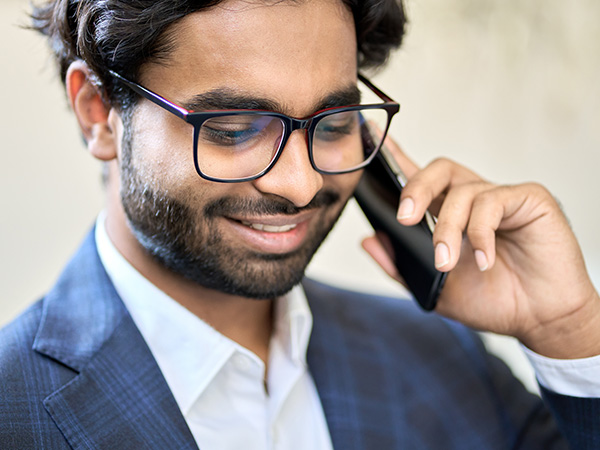
While dry eye isn’t a serious condition, it can have a major impact on your quality of life. You may find your eyes get tired faster, have difficulty reading, seeing clearly, or fluctuation of vision. Not to mention the discomfort of a burning sensation, tearing, or blurry vision. Let’s look at dry eye treatments – from simple self-care to innovative prescriptions and therapies – to help get you back to seeing clear and comfortable again.
What is Dry Eye?
Understanding dry eye will help you determine the best treatment option(s). Dry eye occurs when a person doesn't have enough of the right quality tears to lubricate and nourish the eye. Tears reduce eye infections, wash away foreign matter, keep the eye’s surface smooth and clear, and most importantly help bring oxygen to the eye. People with dry eyes do not produce enough tears or their tears are of poor quality. Other often overlooked problems come from the eyelids, where oil glands produce oils that mix with your tears and keep them from evaporating too quickly. These are common and often chronic problems, especially in older adults. The majority of dry eye issues stem from the oil glands inside your eyelids.
Preventive Self-Care
Before we delve into more serious dry eye treatment options, here are a few simple self-care options that can manage minor cases of dry eye.
Blink regularly when reading or staring at a computer screen and take frequent breaks.
Make sure there’s adequate humidity in the air at work and at home.
Wear sunglasses outside to reduce sun and wind exposure. Wrap-around sunglasses provide the most coverage
Take supplements with essential Omega-3’s as these may decrease dry eye symptoms.
Drink 8 to 10 glasses of water each day to avoid dehydration.
Find out if any of your prescriptions have dry eye as a side effect and if so, see if you can take an alternative.
Artificial Tears
For mild cases of dry eyes, the best option is over-the-counter eye drops, or artificial tears. Here are a few tips for selecting the right one:
Low viscosity – These artificial tears are watery. They often provide quick relief with little or no blurring of your vision, but their effect can be brief, and sometimes you must use these drops frequently to get adequate relief.
High viscosity, gel drops – These are more gel-like and provide longer-lasting lubrication. However, these drops can cause temporary blurring of your vision for several minutes. For this reason, high-viscosity artificial tears are recommended at bedtime.
Avoid redness reducing drops as these have no effect on your dry eye symptoms and will cause your eyes to become dependent on them to get the red out. You’re better off with other drops that focus on the root of why your eyes are red, dry, itchy, inflamed, etc.
Preservative Free eye drops contain less chemicals (preservatives) in them that may cause additional irritation or allergic type reactions.
Prescription Dry Eye Treatments
There are several prescriptions that treat a variety of dry eye. Your eye doctor can advise the best option for your situation.
Specialty Contact Lenses – There are certain contact lenses that deliver more moisture to the surface of the eye. Some available options are scleral lenses, bandage contact lenses, and amniotic membrane grafts for severe dry eye.
Antibiotics– If your eyelids are inflamed, this can prevent oil glands from secreting oil into your tears. Your doctor may recommend oral antibiotics that help reduce inflammation.
Anti-inflammatory drops – These are eye drops that help control inflammation in the eyelids and on the surface of your eyes (cornea) using immune-suppressing medication cyclosporine (Restasis), anti-inflammatory medication (Xiidra), or even corticosteroid drops.
Eyelid Inserts – If artificial tears don't help, another option may be a tiny eyelid insert. Once a day, you place the hydroxypropyl cellulose insert (Lacrisert) between your lower eyelid and your eyeball. It dissolves slowly, releasing a substance to lubricate your eye.
Nasal Spray – A nasal spray (Tyrvaya) formulated to stimulate basal tear production that helps to increase your natural tears.
Autologous serum eye drops – For serious dry eye that’s not responding to other treatment, these eyedrops are made with a sample of your blood. It’s processed and filtered to remove the red blood cells and then mixed with a saline solution. These drops have been proven to be effective when your eyes are unable to tolerate other over-the-counter drops.
Dry Eye Procedures
Punctal Plugs – Tear ducts (drains) can be plugged with tiny temporary or permanent plugs to reduce tear loss. By partially or completely closing your tear ducts, it can keep your tears around longer instead of draining from the front surface too quickly.
Radiofrequency (Forma-I by Envision) – This treatment helps to unblock oil glands in the eyelid. A small heating device is used to apply heat to the eyelids. This device delivers a gentle, warm massage to the eyelids to help melt the hardened oils to allow them to flow again, as well as stimulate the regrowth of those oil glands that have atrophied over time. This treatment has been proven to be an extremely beneficial tool in resetting the oil glands in the eyelid and producing high quality tears again. It also helps treat wrinkles, crows feet, styes/chalazions, and under eye bags!
- Intense-Pulsed Light Therapy (Lumecca by Envision) – This utilizes broad spectrum light applied to the surface that reduces inflammation in the skin and eyelids. It also aids in liquefying and expressing hardened oils that have clogged glands in the eyelids. IPL interrupts the dry eye inflammation cycle by bringing the tear film back to normal, resulting in an improvement in dry eye symptoms. It also helps treat inflammatory skin conditions like Rosacea, sun spots blepharitis, demodex lid mites, and more!
You don’t have to suffer from the symptoms of dry eyes. Talk to your optometrist about dry eye treatment options designed to address the underlying cause of your condition.








